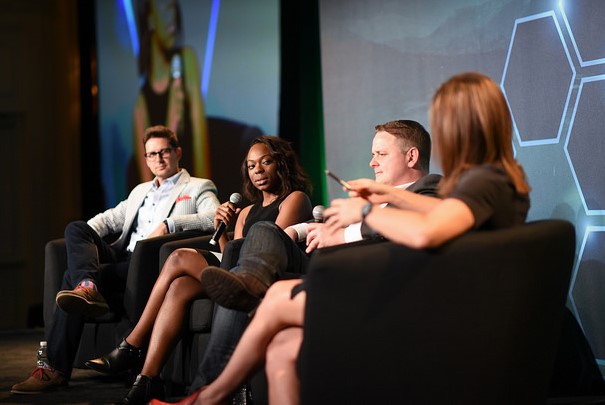LAS VEGAS – At the Dell EMC World conference, Michael Dell, CEO of Dell Technologies, said the future will not be what we saw in those bad science fiction movies. Technology will improve human capacity and produce a lot of great things.
But what would the world look like in 2030, which is just a short 13 years away. Dell EMC trotted out four industry experts to show us what’s in store for humanity in the year 2030.
They are:
- Rachel Maguire, Research Director for the Institute for the Future, based in Palo Alto, Calif.
- Olivier Blanchard, senior analyst at Futurum Research.
- Jordan Howard, the millennial on the panel and co-founder of GenYNot.
- Brian Mullins, founder and CEO of augment reality vendor DAQRI.

The Institute for the Future studies long term directional change to gain insights for better decision making. Maguire said that we need to grapple with sophisticated, powerful technology to see if it produces a positive or negative; intended and unintended result.
She outlined the human machine partnerships concept in hopes of providing some understanding on what it means to partner with a machine.
This is what Maguire and the Institute for the Future is trying to find out:
- What do we need today to build those partnerships?
- What is a core human strength?
- What is a competency a machine will have in the next decade?
Olivier Blanchard believes that what the IT sector is doing today with digital transformation will produce things that are actionable for non-tech decision markers.
“Adaptability sets us (humans) apart. Over the last few thousand years’ change has been slow. People have not had to adapt quickly. We need to adapt quickly and technology will help us and create an agile style,” he said.
Blanchard provided a negative, neutral and positive view of life in 2030. In his opinion, there could be three scenarios:
- Big Brother: People give up too much power to technology and then it inserts into our lives and gains control.
- Big Mother: A less ominous version of Big Brother where technology does too many things for us. Big Mother means well, but is overbearing.
- Big Butler: Big Butler is more of a teaching technology. It helps us fill in the gaps and may anticipate our needs. This type of technology will help humans do things better and allows us to enjoy our lives more.
Blanchard suggested that by understand these directions it will be easier to drive the outcome people want. “Most people want Big Butler instead of Big Brother. Humans have to focus on that outcome.”
Mullins talked about how artificial intelligence and automation is taking jobs away from people; making people less relevant. However, he believes technology is empowering people. His example is a AI machine beating a Grand Master in Chess, but that AI machine isn’t interested in playing chess. People enjoy playing chess and that’s the difference he envisions for 2030.
“Machines are good at executing quickly and off-loading the results of the creativity. This is an intense form of creativity to find the right patterns of human intelligence and operating that at scale,” he said.
How does it play out today? Mullins said if you look at it from a convergent standpoint with automation, robotics and augmented reality it can communicate with workers to operate safely.
“2030 is off in the distance. What workers will look like may be an (individual) app. I believe AR will be using extensively in surgery. One thing people do not know is that surgery is only available to about one billion people on the planet. We are creating a platform where a general practitioner can help someone save a life through their device,” Mullins added.
Social strategist Jordan Howard said emotional intelligence will be a highly sought after skill in 2030. She said computers will be able to synthesize data quickly because millennials and digital natives don’t want to do that work. “I want the computer to do that,” she added.
Howard’s generation would rather focus on big world problems and try to solve them by examining other people’s experiences. “We will try to develop solutions with that lens because I’m not sure a machine can do that.”
“Millennials and Gen Z or digital natives will have no idea what a pager is or that humans communicated in a phone booth. The idea they have is we want it on demand. We only know on demand and we want efficiency,” she said.
Whatever the outcome people get in 2030, there are signs today that can provide clues, Maguire said. The smartphone handles a calendar, scheduling and information searching. These were tasks people used to do. And, smart machine learning suggests that there will be a different relationship with humans and machines by the time 2030 comes around.





